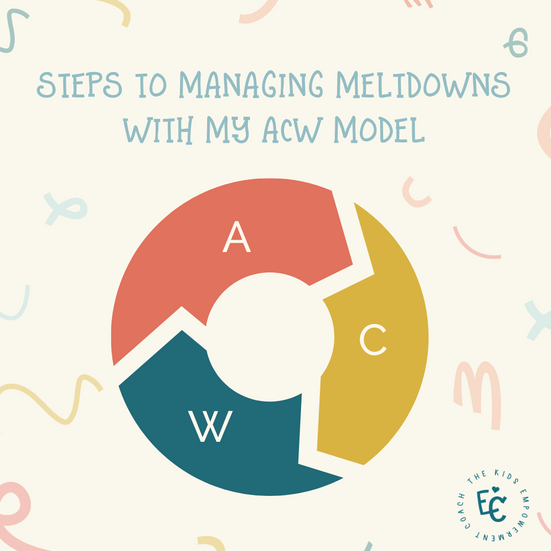Beyond the Tears: The ACW Guide to Supporting Your Child Through Meltdowns
- Laura Wallace
- Mar 18, 2024
- 2 min read
Meltdowns – they're the emotional storms that can shake up even the calmest of households. As parents, witnessing our children experience these overwhelming floods of emotion can leave us feeling bewildered, frustrated, and sometimes even powerless. But fear not, because in the chaos of meltdowns lies an opportunity for connection, understanding, and growth.
In this blog post, we'll explore the phenomenon of meltdowns and introduce the ACW model – a simple yet effective toolkit designed to help parents navigate these turbulent times with compassion and resilience. From acceptance to cultivating calm and working together with our children, each step of the ACW model offers practical strategies for supporting our little ones through their emotional storms.
So, grab a cup of tea, take a deep breath, and let's dive into the world of managing meltdowns with the ACW model.
Understanding Meltdowns
A meltdown can be likened to a torrential downpour of emotions, overwhelming the brain's capacity to cope with the situation at hand. When triggered, the amygdala, our emotional control center, activates, plunging the child into fight, flight, freeze, or fawn responses as a means to seek safety. During such moments, communication often proves futile. While physical contact may offer comfort, it's essential to prioritize safety for everyone involved too. If the meltdown is physical, gently move your child away from potential hazards, ensure siblings are out of harm's way, and maintain a safe distance while remaining nearby to provide support if needed.
Your Emotional Response
It's natural to experience a range of emotions yourself when your child has a meltdown. From embarrassment to frustration, anger to worry, these feelings are valid and common. Yet, it's crucial to resist the temptation to appease the situation with promises or distractions. Instead, embrace the discomfort, projecting a calm demeanor to be the stable presence your child needs in such moments.
The ACW Model: A Guide for Parents
A = Acceptance
Recognize that meltdowns are a part of the developmental journey or a response to overwhelming emotional distress.
C = Cultivate Calm
Strive to maintain a composed presence, modeling emotional regulation for your child. However, acknowledge your triggers and take breaks if needed to ensure your own well-being.
W = Work Together
After the storm has passed, engage in open dialogue with your child to understand their triggers and emotions. Approach these conversations with empathy, validating their experiences while gently probing for insights. Together, uncover patterns and develop strategies to navigate future challenges.
Tips for Minimizing Meltdowns
Create a calm kit tailored to your child's needs, whether for school, social outings, or home.
Ensure healthy snacks and drinks are readily available to help regulate mood and energy levels.
Monitor your child's social schedule, ensuring they have sufficient downtime to recharge and prevent overwhelm.
By embracing the ACW model and fostering open communication, parents can become steadfast allies in their child's emotional journey, providing support and guidance through the stormiest of moments

















Comments